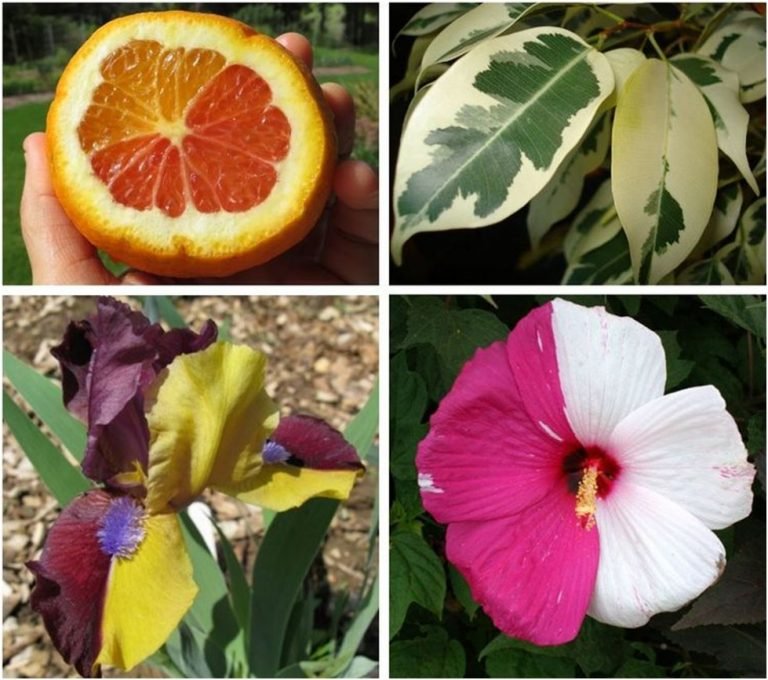What is Genetic Mutation in plants???

A mutation is a heritable, sudden change in the structure of a gene, which has no relation to the individual’s ancestry. The change can occur spontaneously or can be the result of exposure to ultraviolet radiation or chemicals.“Mutation” is a derivative of the Latin verb ‘mutare’, meaning “to move or change.”
Plant mutations, known as sports, breaks, or chimeras, are naturally occurring genetic mutations that can change the appearance of the foliage, flowers, fruit or stems of any plant.An individual with a mutation is called a mutant. When a mutation occurs in the reproductive tissue of an individual plant, it can be transmitted to the next generation. When a mutation occurs in the somatic tissue, it will be limited only to that generation and affects only the cells in which it occurs.
Symptoms
A naturally occurring genetic mutation, sometimes known as a sport or a break, causes a sudden change in the appearance of a plant. You may notice coloured flecks in a white flower, or a perennial with single flowers might develop a stem that holds a double flower. Mutation can also cause a change in foliage colour or fruit appearance. Reversion is a form of plant mutation.
Generally, you may only notice one or two mutations on a plant, for example, there might be just one different coloured flower on a plant. Usually, the plant will revert back to its original form the following year.
Cause
Most mutations are random and are a result of a change within the cells of the plant, but mutations can sometimes be triggered by cold weather, temperature fluctuations or insect damage.
Sometimes the mutation is unnoticeable because the characteristics are not passed on from the cell where they occurred, but if the mutation occurs at the growing point, entire shoots can be affected as that cell multiplies and gives rise to whole cell lines.
The term chimera is used when genetically distinct tissues co-exist within the same plant or parts of a plant. For instance, some plants, such as chrysanthemums, roses and dahlias are prone to producing chimeral flowers, where the flowers have sectors of different colours, and chimeras are the usual basis for variegated plants.
Control
Generally, genetic mutations are not a problem, and can be pruned out if undesirable; however, many sports will die out or revert back to their original form of their own accord.
Some mutations are stable and may be of interest to nurseries who actively seek out new plants.
By – Gunjan Khandekar
Primary Teacher
